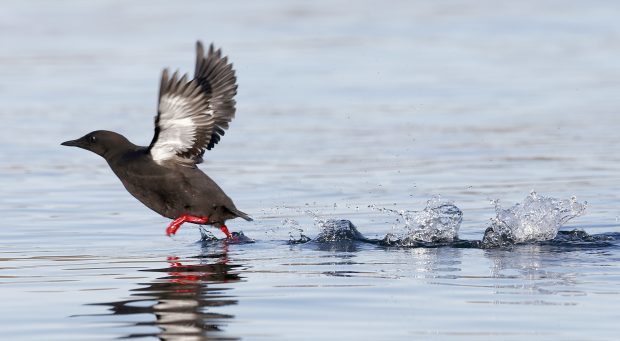A flock of seabirds are performing a free spectacle to delighted tourists in Oban Bay.
It is only in Oban that the Black Guillemots and their unusual antics can be viewed in a busy town centre rather than out at sea.
For the birds, with their striking black and white plumage and bright red feet, are nesting in the drain pipes along the sea wall of Corran Esplande, home to a number of big hotels.
Local photographer Stephen Lawson has been capturing their behaviour.
Mr Lawson said: “They actually nest in the drains in the sea walls round about the Corran Halls. They arrive in the bay probably from about the end of January and then they start pairing off to breed.
“They are pretty tame and can sit five feet away from you when they come in. The birds prefer to fly into the nests when the tide is in because if they miss the drain pipes, as they often do, they fall into the water and swim away and go round try again.
“They are more active in the mornings and when the tide is right.
“People come out of the hotels along the front and are quite mesmerized by these things and their antics. They think they are flying at them and then suddenly they drop down into the drains just a couple of feet below the pavement.
“The Black Guillemots will sit on the Esplanade and if you don’t make any sudden movements you can get quite close to them.
“Oban is probably the only place in Scotland where you can get so close to them without going on a fancy boat trip.”
The spring breeding season for the Black Guillemots, which eat fish and crustaceans, is well underway.
A spokesman for the RSBP said: “Unlike most other European auks the black guillemot is typically found in ones and twos, scattered around rocky islets.
“It is typical of the larger sea lochs of western Scotland, and the northern and western isles, but is also found in Ireland, the Isle of Man and in a handful of spots in England and Wales.”
The highest numbers are on the Shetland and Orkney islands, and down the west coast of Scotland. Small numbers can also be found on the Cumbrian coast at St Bees Head, along the N Ireland coast, and on the Isle of Man.
